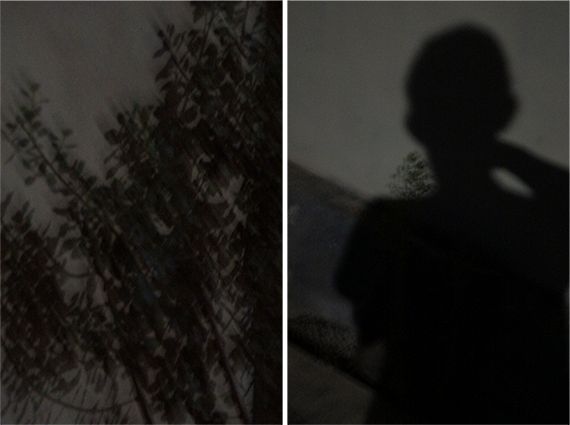Biography
b. 1951 Medan, Sumatra in the former Dutch colony Indonesia where he lives until 1956 before traveling to the Netherlands passing the Suez Canal just before it closed due to the Suez War between Egypt and Israël, England and France.
A year later the family moved to Germany before settling in the Netherlands in 1963.
Since 2001 lives & works in between Amsterdam and the Alentejo and Ribatejo regions of Portugal.
Developed an interest in painting, writing, film and photography and went to artschool in the 70s to become a painter soon switching to photography.
Still at the Rietveld Academy attracted attention with Stadsstillevens (City-stills), a project depicting Amsterdam in a documentary style in breach with the social photography as was customary in the Netherlands during the seventies and eighties.
Between 1976 and 1981 regularly travels to the Caribbean and becomes involved in the fight for landrights of the indigenous Arawak and Carib people of Surinam.
During those years travels the US as well, photographing mainly landscapes during roadtrips.
Besides his photographic practice established
Fragment Photo-book Publishers with some friends,
rejuvenating the almost extinct tradition of well published photo-books in the Netherlands. Fragment published books by Ed van der Elsken, Cas Oorthuys, Johan van der Keuken, Hans Aarsman, Henze Boekhout, Willem Diepraam and Wout Berger amongt others, working with the best designers, writers and printing-houses available at the time.
In 1985 meets the photographer Theo Baart while both individually working on the Rijksmuseum assignment Post-war Housing in the Netherlands. This led to regular collaborative projects. The first, Nagele N.O.P. (1987/1988), was a follow-up on the Rijksmuseum project, depicting Nagele, a new village on manmade Polderland experimentally designed ‘in one grand gesture’ by modernistic architects like Aldo van Eyck and Gerrit Rietveld. Focused his photography on the architecture and the drawing-board straight-lined highly designed new polder-landscape.
As a result
became fully involved in photographing landscape, using it as a canvas to reflect on culture.
In 1991 he was awarded the Amsterdam City Maria Austria Prize for his landscape photography.
Again together with Theo Baart initiated the project
Snelweg/Highways in the Netherlands (1995/1996)
in which the 'forgotten landscape' of Dutch Highways was presented as not just a means for moving towards a distant location but as a landscape in itself.
In order to publish
Snelweg/Highways without having to make artistic or commercial compromises and as a means for facilitating future projects by both they established the publishing house
Ideas on Paper.
Snelweg was published to coincide with the installation of the project in De Kunsthal in Rotterdam in 1996. Both book and installation became successful and influential over the years. The installation was shown in several venues in the Netherlands, Germany, France, Russia and the USA over a period of 25 years. The book was included in the Parr & Badger publication The Photobook: A History (Volume II) and since became a collectors item.
While working on Snelweg started his project Memory Traces in which landscape, history and memory became interrelated and over the years photographed in Bikini, Sarajevo, Chernobyl, Japan and Vietnam and other locations. In the MT publication mixed photographs with prints from family album negatives found in a looted house in Chernobyl and writings including experimental ‘Written Landscapes', travelogues and a short fictional story on the end of silver-based photography. Memory Traces was published by Ideas on Paper in December 2009 designed by Irma Boom. It is included in The Dutch Photobook as one of the 124 seminal Dutch Photobooks since 1945. (NAi Publishers/Aperture, 2012)
In 2008 was invited by the European Eyes on Japan/Japan Today project to photograph Nagasaki. The resulting photographs were exhibited in Liverpool during European Capital of Culture in 2010 and later -together with a selection from Memory Traces- in Nagasaki.
After Baldus (2012-2014), a final collaboration with Theo Baart together with Alison Nordström, then curator at large at the George Eastman House in Rochester NY, drew it’s inspiration from the 1855 album Chemin de Fer du Nord by Eduard-Denis Baldus, one of the most prolific photographers at the beginning of the 19th Century.
As a result a oversized handcrafted album of original prints was produced in a very small edition, which during exhibitions can be leafed through by the visitors revoking the feeling of the original 19th Century Baldus album while the filmed Baldus album from the collection of the George Eastman House is projected in the background, being leaved through by a curator with cotton-gloved hands.
works in public collections
Rijksmuseum Amsterdam
Stedelijk Museum Amsterdam
Municipal Archives Amsterdam
Nederlands Foto Museum Rotterdam
Bibliothèque National Paris
George Eastman Museum Rochester NY
Ministry of Agriculture Den Haag
Municipal Collection Almere
Nieuwland Erfgoed Centrum Almere
Museum Nagele Nagele
Higashikawa Photo Museum Higashikawa, Hokkaido

Self Portrait, Moonlight. Reliquias Portugal